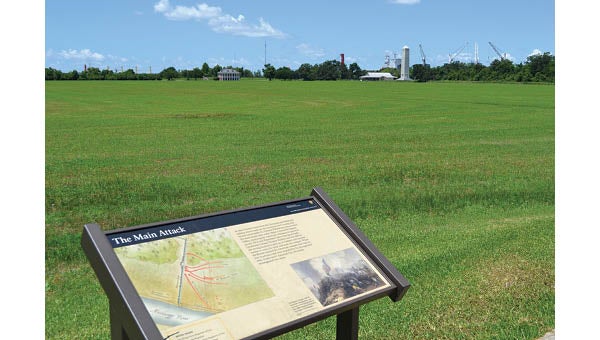Pakenham, Jackson and the ‘Free Man of Color’
Published 2:00 pm Tuesday, January 3, 2023
1 of 2
|
Getting your Trinity Audio player ready...
|
By Bill Carey
I don’t know if everyone has seen the Netflix series “The Crown,” about the reign of Queen Elizabeth II, but there’s an episode with a distant connection to Tennessee history.
Season 2, Episode 6, is about Edward VIII’s disgraceful relationship with Nazi German officials after he abdicated the throne. In this episode, Queen Elizabeth II visits her retired private secretary Tommy Lascelles. She finds him setting up toy soldiers on a diorama of the 1812 Battle of Salamanca, between the British and the French.
“Troops of Sir Edward Pakenham’s third infantry division,” Lascelles explains to the queen.
What does this have to do with Tennessee?
Pakenham, a British hero from the Napoleonic Wars, was killed three years after Salamanca at the Battle of New Orleans.
As you may remember from your Tennessee history classes, here’s the backstory of the Battle of New Orleans:
Toward the end of the War of 1812, 15,000 British troops landed in Louisiana, intending to invade New Orleans. Having previously beaten Napoleon Bonaparte of France, these soldiers and sailors were certain they would defeat the American troops.
The U.S. government ordered General Andrew Jackson to defend New Orleans. Jackson’s army marched to Louisiana and set up at a sugar plantation called Chalmette, about five miles south of the city.
Jackson chose a narrow stretch of land, with the Mississippi River on one side and a swamp on the other. He ordered his men to dig a ditch and rampart behind it. Then they waited for the British, and the main attack came on January 8, 1815 — 208 years ago this week.
On paper, this looked like an easy victory for the British. After all, the British had more experienced soldiers, better armed soldiers and three times as many soldiers as the Americans. Jackson’s army was not as well organized and trained as the British invaders; it consisted of a hodgepodge of soldiers from different places, with no experience fighting together.
About 1,300 of Jackson’s army were members of the Tennessee militia. A few hundred were soldiers from the U.S. Army. Some were Louisiana militiamen — many of whom spoke French and Spanish, but not English. Sixty-two were Choctaw Indians. Some were privateers from Louisiana known as Baratarians.
Jackson also had nearly 500 free Black men fighting for him at New Orleans. In fact, this was the largest use of African-American soldiers in an American battle until the Civil War.
So the British won, right? Wrong.
In fact, the American army annihilated the British at New Orleans, scoring one of the greatest upsets in world military history. And it was during the peak of the battle that General Edward Pakenham died, leading his troops in a desperate charge into fire.
And who fired the shot that killed Pakenham?
A day after the battle, General Jackson wrote a letter to President James Monroe about what happened. Jackson described the series of events that preceded Pakenham’s death, said he heard a gun fire, and says he saw Pakenham “reel and pitch” out of his saddle.
Jackson went on to say that “I have always believed he [Pakenham] fell from the bullet of a free man of color, who was a famous rifle shot and came from the Attakapas region of Louisiana.” (The Attakapas region is in the extreme southern part of the state, where it borders the Gulf of Mexico.)
I’ve always known that the British army was humiliated by a rag-tag army of Americans, and outsmarted by a man (Jackson) who had not even attended a military academy. But what I had not realized until I recently read this first-person account is that the great Edward Pakenham was killed by a free man of color in a country where the vast majority of men of his race were enslaved.
Sadly, this remarkable military anecdote did not affect American history very much. The military skill of one free man of color from Louisiana did not help his fellow African-Americans during the next half century, as slavery spread into Alabama, Mississippi, Louisiana and Texas. Black soldiers would be allowed to take part in that war in large numbers after President Abraham Lincoln signed the Emancipation Proclamation.
That is obviously another column.
Bill Carey is the founder of Tennessee History for Kids, a non-profit organization that helps teachers cover social studies.





